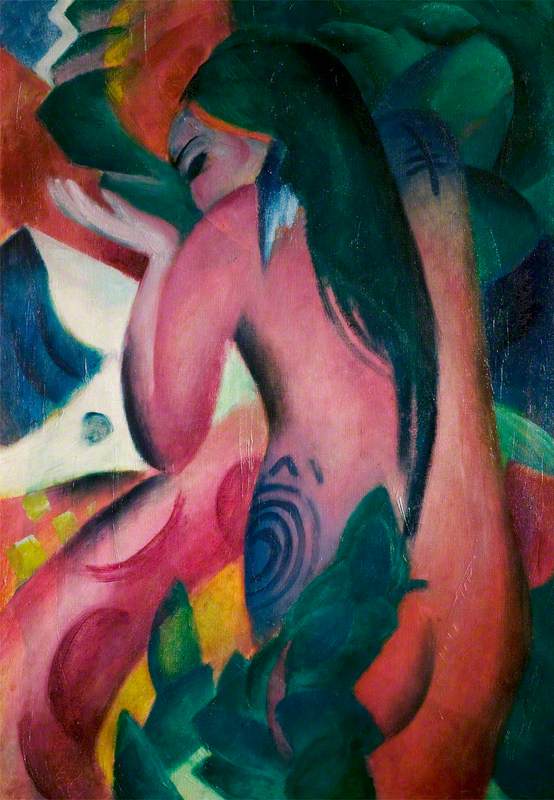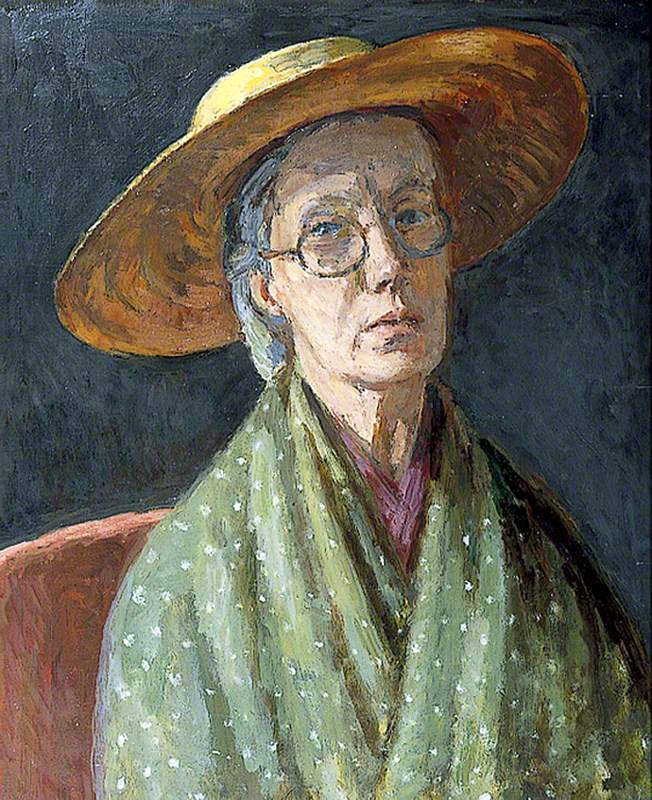Leicester, you may have seen in the past year or so, has been catapulted into the public eye due to the discovery of a certain Richard III’s bones, which were found beneath a car park (minus the feet). The city, however, has more to offer than ‘merely’ the bones of a lost, rather notorious, King demonised by Mr Shakespeare. In the city’s New Walk Museum & Art Gallery lies a collection with an astonishing past riddled with joy, despair, danger and hope – its story is the kind of stuff you would expect of a Hollywood blockbuster, I kid you not.
Here you will find a staggering 250 works by notable German Expressionist artists including Franz Marc, Otto Dix, Lyonel Feininger and Wassily Kandinsky. Ok, so they may not be Leonardo da Vinci, Rembrandt or even Andy Warhol, but these artists, this collection and the people involved with it were just as remarkable and have their own incredible story to tell. This collection, the largest of its kind in the UK, has made its home in the gallery thanks to some key figures in history.
Introducing: the Hess family; a wealthy German Jewish family of three who owned a successful shoe manufacturing business, M. & L. Hess Schuhfabrik. Alfred Hess and his wife, Tekla, had a son together named Hans. They were a happy, loving family who supported the contemporary German art. Their house in Erfurt, Southern Germany, practically became a hub for artists, some of them staying for weeks.
Imagine a house full of paintings from floor to ceiling. Hess collected about 4,000 works and had to regularly rehang everything in his house to ensure each painting was seen at some point in the year. The whole place would have seeped creativity when filled with such avant-garde characters whose artistic ideas were encouraged and adored by the Hess Family. It must have felt like being on the very front of Germany’s contemporary art scene, but in a comfortable, homey environment.
Hinter der Stadtkirche (Behind the Church)
1916
Lyonel Feininger (1871–1956) 
Now, we all know the terrible fate of so many of the wealthy German Jews with the arrival of the Second World War and the Hess gamily was sadly no exception. Art collections, such as that owned by the Hess family, all over Germany were being confiscated by the state and labelled 'degenerate art' under the persecution of the Nazis. The Hess collection was in terrible danger and it was up to Mrs Hess alone to save it. Tekla had tragically lost her husband after hospital surgery in 1931 and her son Hans had immigrated to the UK in 1935. So, it was up to Tekla to save what she could – no doubt, she was one brave lady (told you it’s a Hollywood-worthy story).
Tekla did her best, disguising paintings as loans and sending them to Switzerland. But soon enough, the Nazi government demanded for the collection to be returned to Germany. It was in 1939 that Tekla, seeing the increasingly dangerous situation in Germany, decided to cut and run to the UK where her mother and son had already relocated. She only had a handful of paintings. Some even had to be smuggled out rolled up inside chair legs of furniture she took to the UK. The rest of the collection was illegally sold or subsequently lost.
Let’s now cut to Leicester, 1944 and introduce Trevor Thomas, the innovative director of the city’s New Walk Museum & Art Gallery from 1940 to 1946. During the Second World War, most art museums were empty, the works being moved to safer, secret locations. This resulted in cavernous, artless galleries located in the centres of their cities, waiting for the return of their priceless collections.
There were some, however, who used these spaces to their advantage. Following the example led by The National Gallery of London’s curator Sir Kenneth Clark, Trevor Thomas established a programme of activities, talks, small exhibitions and concerts that would fill the gallery with life again. It was at these lunchtime concerts that Tekla Hess befriended Trevor Thomas. 'How?' you might ask. Well, in brief, Mrs Hess moved to Leicester to be near her son who was working on an internment camp near Loughborough, close to Leicester – and now we reach full circle. Trevor Thomas, who had spent time in the US before the outbreak of war had some knowledge of German Expressionism. He also knew of the reputable name of 'Hess' in the contemporary art market at the time and their incredibly valuable and vast collection.
Through his friendship with Tekla, Trevor not only managed to wangle a German Expressionist exhibition in Leicester in 1944, ambiguously called 'Mid-European Art', but he also established the beginning of the 250 work German Expressionist collection that is now housed there. The gallery, Hess family and Britain’s public have a lot to thank this pioneering director.
What a clever man. Aged 37, he had saved the remnants of a priceless collection, helped a refugee family in need in the process and placed a provincial gallery on the map – kind of the ‘Superman of art in Leicester’ really!
However, (oh yes, there’s still more to tell) like all the best superheroes, there is also tragedy mixed into this story. In July 1946, Trevor Thomas was suddenly dismissed from his role at the gallery after he had appeared in court for a gay ‘offence’ of public indecency. All record of him at the gallery was wiped clean. Homosexuality was a serious crime in Britain during this time and any association with it would likely mean the end of your job – anyone remember a certain Mr Cumberbatch playing a genius of the 1940s penalised for his sexuality? Hint: He broke the Enigma code.
There’s a lot of speculation about the actual nature of Trevor Thomas’ dismissal but, despite his short stay at Leicester, he clearly made his mark on the place and left a legacy that the gallery today are, rightly, very proud of.
Even if German Expressionism might not be the sort of work you look at and think 'ooo I think that would look lovely in the living room dear', the paintings’ history, significance and stories are rich and often inspiring, especially in Leicester’s case. You never know, you might just fall under the German Expressionism spell.
If you want to know more about the artists and the paintings themselves, have a little browse of Alice Theobald’s Art UK article or, better still – take a trip to Leicester. Where else can you visit famous, medieval, tyrant kings as well as ground breaking twentieth-century German art?
Ellie Walker
Ellie is a blogger at viewfromthegalleryblog.wordpress.com, currently working as a gallery assistant in central London.













